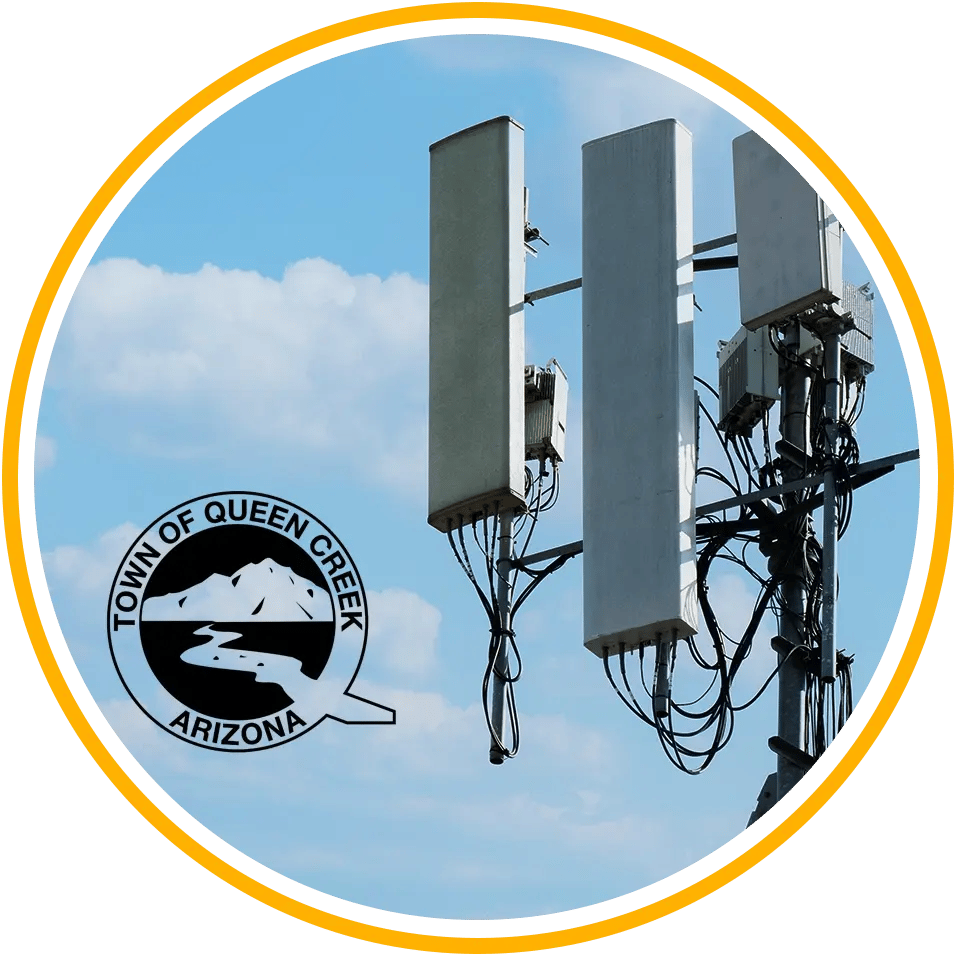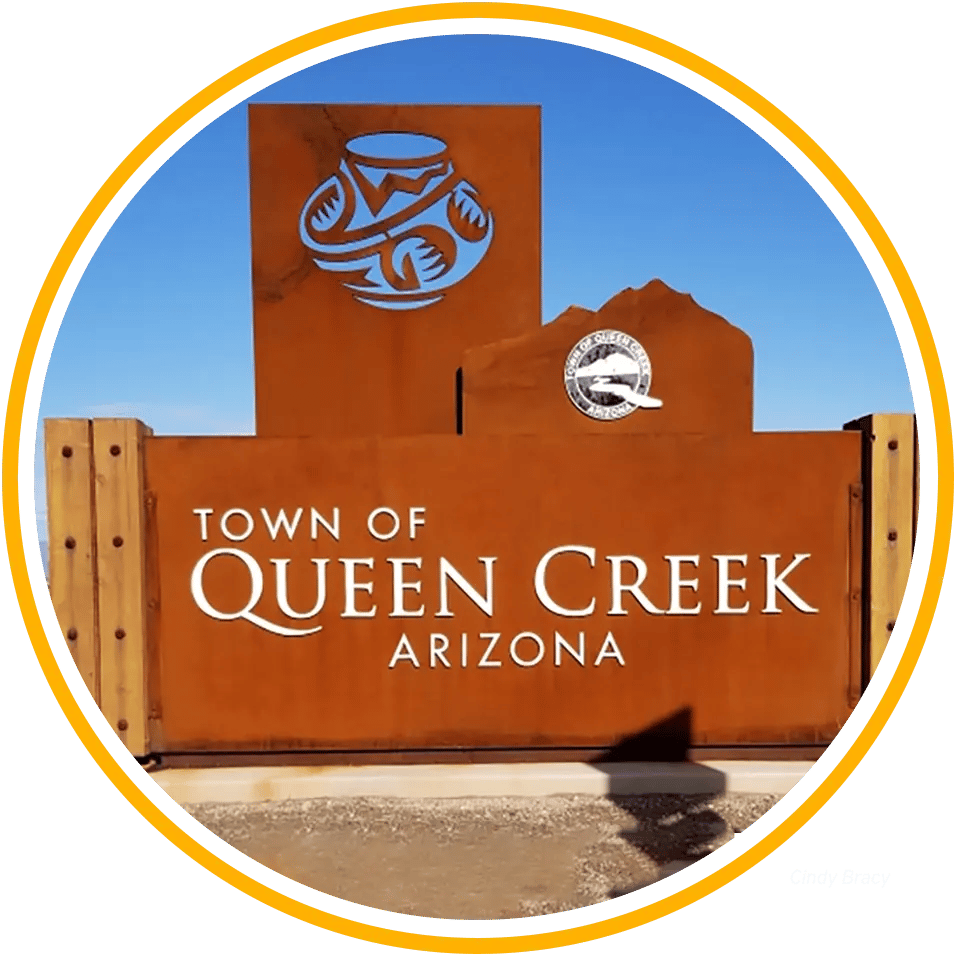CASE STUDY
Queen Creek Water District

SCADA Telemetry Network Modernization
The water district of the rapidly growing town of Queen Creek, AZ upgrades its radio telemetry system with help from Vertech.
Enterprise SCADA Streamlines Processes for Renewable Energy

About the Project

Queen Creek is a town in Maricopa and Pinal counties in the state of Arizona—just outside Phoenix—with an estimated population of just under 50,000.
Overview
The rapidly growing Phoenix, Arizona suburb of Queen Creek was struggling with a telemetry system using aging GE/MDS iNET 900 and iNET II radio technology. SCADA response times were so bad, operators would often drive to a site after starting or stopping pumps to make sure the command had actually taken effect. An upgrade to their SCADA software doubled the amount of data on the network overnight, and it became clear that their distributed radio network needed modernization.
As Queen Creek is continuing to grow and absorb private water companies, they also have plans to add video feeds from remote sites, so new radio infrastructure needed to be scalable and provide plenty of spare bandwidth.
The Story
Project Overview
The rapidly growing Phoenix, Arizona suburb of Queen Creek was struggling with a telemetry system using aging GE/MDS iNET 900 and iNET II radio technology. SCADA response times were so bad, operators would often drive to a site after starting or stopping pumps to make sure the command had actually taken effect. An upgrade to their SCADA software doubled the amount of data on the network overnight, and it became clear that their distributed radio network needed modernization.
As Queen Creek is continuing to grow and absorb private water companies, they also have plans to add video feeds from remote sites, so new radio infrastructure needed to be scalable and provide plenty of spare bandwidth.
Challenge
After an upgrade to its SCADA software doubled the amount of data on the network overnight, it became clear that Queen Creek’s distributed radio network needed modernization.
Solution
Vertech designed a hub and spoke radio network that connected individual sites to a central SCADA system via one of three elevated towers, forming a high-speed wireless backhaul network.
Requirements
Modernize a distributed radio network, increase bandwidth, automate pump checks, and devise a reliable plan for adding multiple video feeds from remote sites.
.jpg?width=2000&name=Frame%20299(7).jpg)
(1).jpg?width=2000&name=Frame%20299(1)(1).jpg)
(1).jpg?width=2000&name=Frame%20299(2)(1).jpg)
(1).jpg?width=2000&name=Frame%20299(3)(1).jpg)
(1).jpg?width=2000&name=Frame%20299(4)(1).jpg)
(1).jpg?width=2000&name=Frame%20299(6)(1).jpg)
(1).jpg?width=2000&name=Frame%20299(5)(1).jpg)
The Story
The Challenge

After an upgrade to its SCADA software doubled the amount of data on the network overnight, it became clear that Queen Creek’s distributed radio network needed modernization.
The Solution
 Vertech designed a hub and spoke radio network that connected individual sites to a central SCADA system via one of three elevated towers, forming a high-speed wireless backhaul network.
Vertech designed a hub and spoke radio network that connected individual sites to a central SCADA system via one of three elevated towers, forming a high-speed wireless backhaul network.
Requirements

Modernize a distributed radio network, increase bandwidth, automate pump checks, and devise a reliable plan for adding multiple video feeds from remote sites.




Technology Used
-
Proxim Tsunami QB10150 radios
-
Siemens Ruggedcom WiMax Radios
-
4.9GHz Licensed Band
The Results
Vertech designed a hub and spoke radio network that connected individual sites to the central SCADA system via one of three elevated towers forming a high-speed wireless backhaul network. The design process included radio path studies using Google Earth and GPS coordinates of each site. Our team visited each site to check for radio interference and physical obstructions.
We used Proxim 5GHz backhaul radios providing 54Mbps connections back to the central administration building. This first phase improved overall performance of the existing network and improved usability for operations, but bandwidth to each site was still constrained.
We connected individual sites to the backhaul network with Siemens Ruggedcom 4.9GHz radios. This licensed band is reserved for public emergency and utility users, greatly reducing RF interference.
Next, we installed base station radios on each tower and connected to the Proxim backhaul network. Lastly, we added subscriber radios at each remote site and connected to the base station radio with the best connection characteristics. We then cut over each site one at a time to eliminate impact to the Town's operations.
Network bandwidth at each site ranged from 7Mbps to 10Mbps. The improvement was instantly noticeable at the central SCADA system with near instantaneous visual feedback to remote system commands. The system is using a small fraction of the available bandwidth at each site and on the backhaul network, enabling the Town of Queen Creek to both add additional sites to the network and add video in the future.
Drop us a line
If you'd like to learn more about how we can improve your operations, get in touch! We love a good challenge and we're ready to help.
.png?width=750&height=679&name=247Support%201(1).png)

